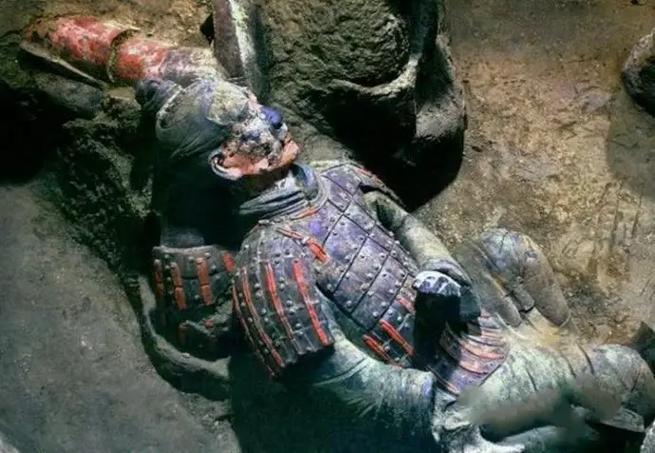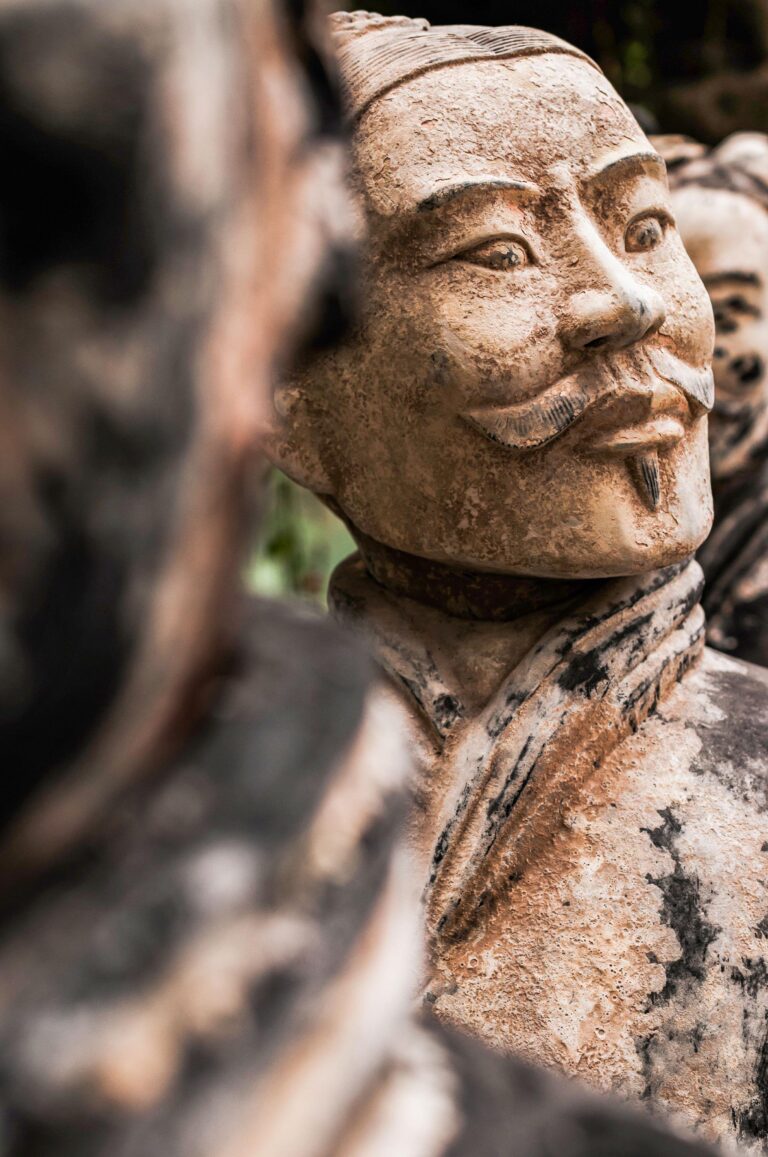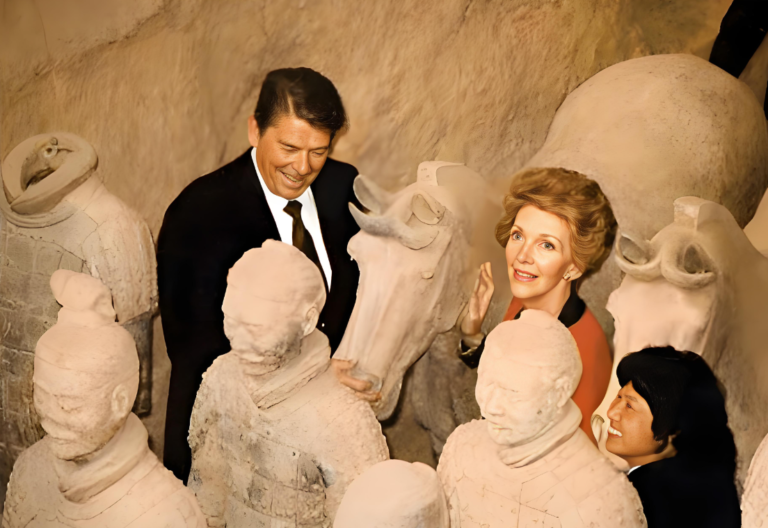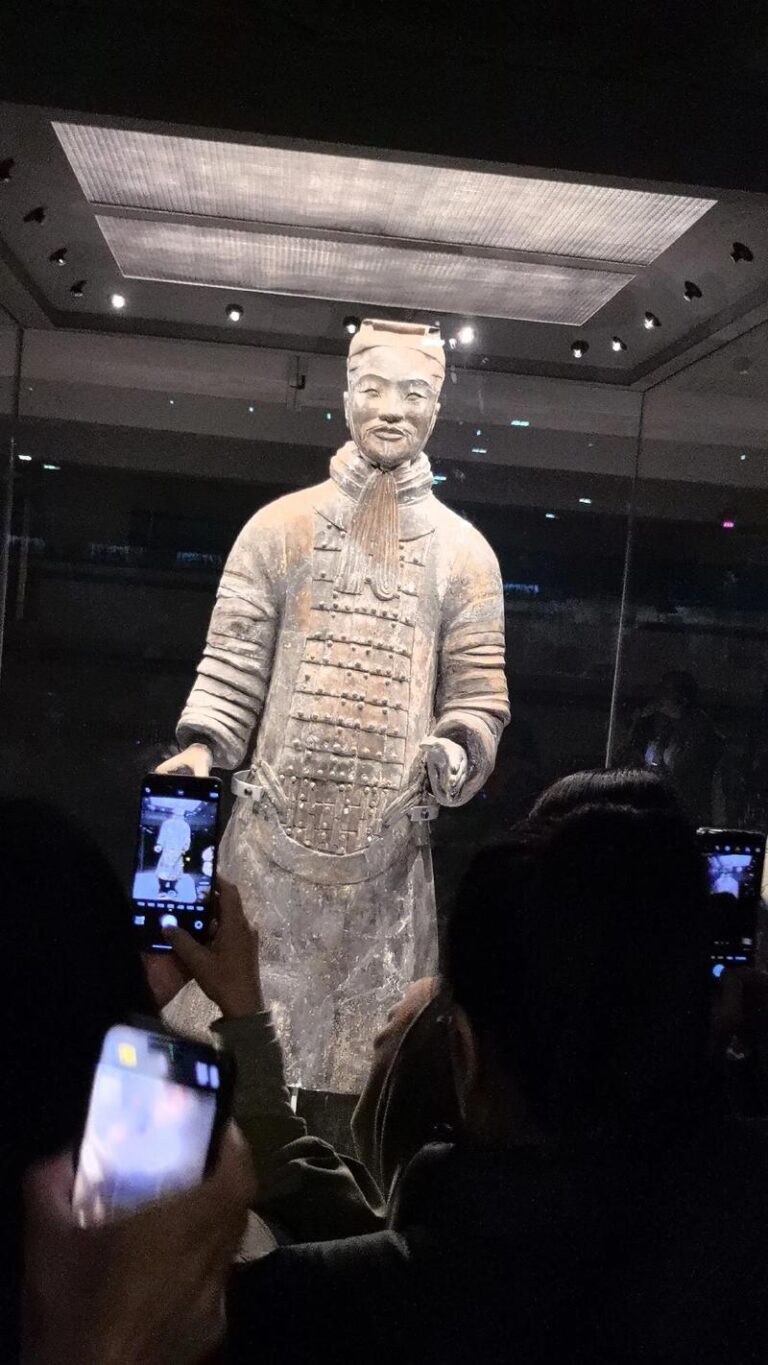Which country is famous for Terracotta Army?
The Land of the Terracotta Army: China, Home to the Millennium-Old Underground Army
When people discuss the ancient wonders that have amazed the world, one name is always closely associated with an extraordinary archaeological discovery—the Terracotta Army. The nation that created and safeguarded this treasure of human civilization is none other than China, a country with a history spanning five thousand years.
China: The Heart of an Ancient Civilization
China, located in eastern Asia, is a vast and historically rich nation. It is not only the birthplace of silk, porcelain, paper-making, and gunpowder, but also the cradle of countless great ideas that have shaped the course of world history. Over the course of thousands of years of civilization, numerous powerful dynasties rose to prominence and flourished on this land, leaving an indelible mark. The Terracotta Army is a stunning physical testament to one of the most glorious and fascinating chapters in this history—the powerful yet short-lived Qin Dynasty (221 BCE–207 BCE).
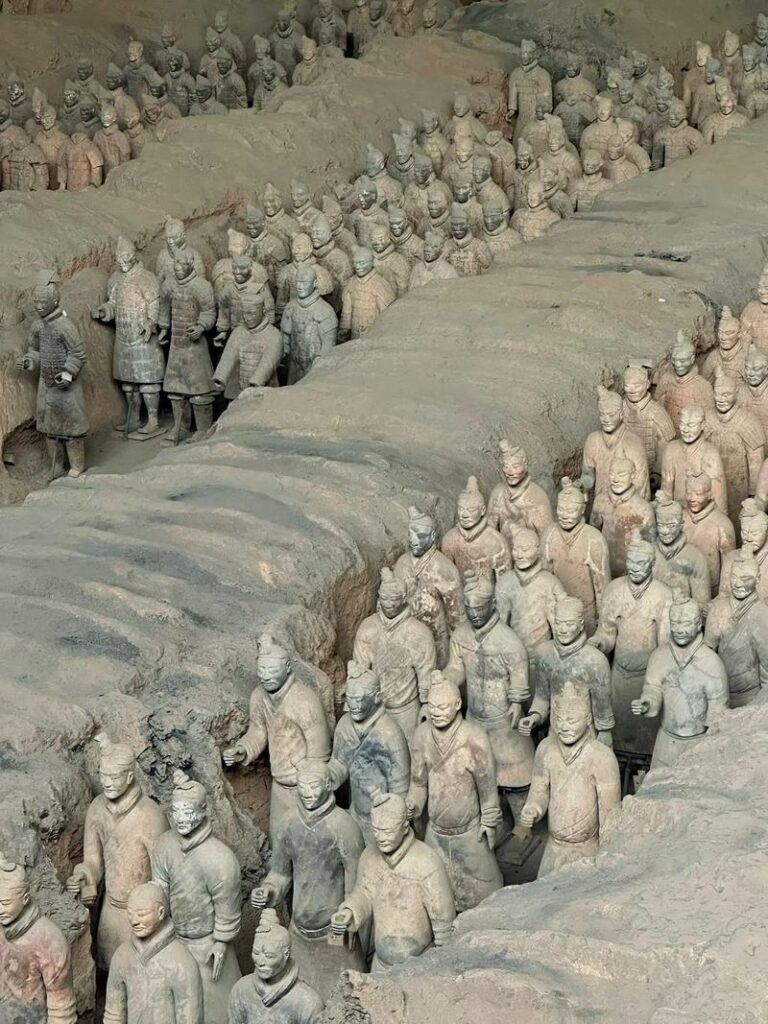
The Qin Dynasty: The Forger of a Unified Empire
To understand the extraordinary significance of the Terracotta Army, we must return to China over two thousand years ago. At that time, China was not a unified nation but a collection of warring states, known as the Warring States Period. It was not until 221 BCE that a ruler named Ying Zheng, the King of Qin, used his powerful military might and iron-fisted rule to conquer the other six major rivals one by one, ultimately achieving China’s first true unification in history. He bestowed upon himself an unprecedented title—the First Emperor—meaning “the first emperor,” and hoped that his dynasty would “last for ten thousand generations.”
Qin Shi Huang’s achievements were truly epoch-making: he unified writing, currency, and measurements, constructed a vast network of roads, and connected early defensive structures to build the prototype of the world-renowned Great Wall. He established a highly centralized bureaucratic system whose influence persists to this day. However, this emperor who sought eternal rule also made grand and meticulous arrangements for death.
The Guardians of the Eternal Empire: The Birth of the Terracotta Army
Qin Shi Huang believed that even in the afterlife, he still needed a powerful army to protect his soul and continue to rule his underground empire. However, the ancient barbaric custom of human sacrifice had been abandoned by the times. Thus, a groundbreaking project was launched: using clay to create soldiers, officers, chariots, and horses nearly life-sized, forming a vast “underground army”—this is what we now know as the Terracotta Army.
This was not merely a burial offering but an extension of the First Emperor’s ambitious vision, a tangible expression of his eternal desire for power. Thousands of artisans were conscripted, working under strict organization to shape, fire, and paint these clay figures day after day. Each figurine, from generals to ordinary soldiers, features unique facial features, expressions, hairstyles, and clothing details, showcasing remarkable realistic artistry and craftsmanship. It is estimated that the construction of the entire mausoleum complex (including the main tomb, which has not yet been fully excavated) mobilized nearly 700,000 laborers and took approximately 38 years to complete.
The Awakening of a 2,000-Year-Old Miracle: A Farmer’s Shovel and a World Archaeological Wonder
This massive underground army, buried alongside Emperor Qin Shi Huang after his death, remained dormant for over 2,200 years. The dust of history had obscured all memory until the spring of 1974.
In a small village (Xiyang Village) in Lintong District, Xi’an City, Shaanxi Province, China, several farmers were digging a well to combat drought. Suddenly, their shovels struck a hard clay fragment. Out of curiosity, they continued digging, and a life-sized clay human head gradually emerged. This unexpected discovery immediately caught the attention of local cultural relics authorities. As professional archaeologists carefully cleared away the surrounding soil, a breathtaking sight unfolded before the world: thousands of fully armed, neatly arranged clay soldiers stood silently in a massive underground pit!
This first-discovered and largest pit was named “Pit One.” Subsequent explorations uncovered Pit Two (a mixed-unit military formation), Pit Three (the command center), and a burial pit containing two exquisitely crafted bronze chariots of unparalleled craftsmanship. The discovery of the Terracotta Army was like a giant stone thrown into a calm lake, instantly shocking China and stunning the entire world. It was unquestionably hailed as the “Eighth Wonder of the World” and one of the “greatest archaeological discoveries of the 20th century.”
Facing the underground army: beyond imagination
When you stand on the viewing platform of the Qin Shi Huang Mausoleum Museum in Xi’an (the Terracotta Army pits are part of the mausoleum complex) and overlook Pit 1, the sense of awe that transcends time and space is indescribable:
Grand in scale, majestic in grandeur: Pit One itself is like a massive indoor football field (230 meters long, 62 meters wide). Over 6,000 terracotta warriors are arranged within the pit (approximately 1,000 have been excavated and displayed so far), forming a disciplined military formation of infantry and chariot troops, as if ready to charge into battle for their emperor at any moment.
Each face is unique and lifelike: What is most astonishing is that no two terracotta warriors have exactly the same face! They have different facial structures, eye shapes, nose shapes, lip shapes, beards, and hairstyles. You can see young soldiers with determination, older officers with composure, and generals with authority. Their expressions vary, some solemn, some vigilant, as if frozen in time as living beings. This reflects the extraordinary realistic craftsmanship of Qin-era artisans and their respect for individual lives (even those of terracotta warriors).
The details are astonishing, and the craftsmanship is exquisite: the terracotta warriors average about 1.8 meters in height and have sturdy builds. The armor plates on their bodies, the folds and wrinkles in their battle robes, the anti-slip nails on their shoe soles, and even the palm lines on their hands are all meticulously carved. Originally, they all held real bronze weapons (such as swords, spears, and crossbows), though most of these weapons have been lost over time—either due to the decay of wooden handles or looting by later generations. However, the bronze swords that have been unearthed still gleam with a cold, sharp brilliance.
The Crown of Bronze: Bronze Chariots and Horses: In a separate exhibition hall, two painted bronze chariots and horses, scaled down to half the size of real chariots and horses, showcase the unparalleled metal casting and mechanical craftsmanship of the Qin Dynasty. These chariots feature complex structures, elaborate decorations, and thousands of components, employing advanced techniques such as casting, welding, and inlaying. They are hailed as the “Crown of Bronze” and serve as precious physical evidence of the Qin Shi Huang’s imperial chariot system.
Terracotta Warriors: China’s Civilizational Landmark for the World
The discovery of the Terracotta Warriors holds significance far beyond merely revealing a glimpse of the Qin Shi Huang Mausoleum. It serves as a three-dimensional historical record carved into clay, offering an invaluable window into understanding Qin-era society, military affairs, technology, art, handicrafts, and funeral rituals:
Military Encyclopedia: The military formations, soldiers’ equipment, and weapon designs of the Terracotta Army provide the most direct evidence for studying Qin-era military systems, tactical concepts, and the organizational structure of its powerful army.
A Monument to Science and Art: The large-scale firing technique for the terracotta figures (ensuring they do not deform or crack at high temperatures) and the precise casting and assembly techniques for the bronze chariots and horses represent the world’s leading technological achievements at the time. The realistic sculptural artistry is unparalleled in history.
A Microcosm of the Empire: The entire Terracotta Army formation, including soldiers of different ranks and officers of various grades, serves as an underground miniature projection of the highly organized, strictly hierarchical, and vast empire of the Qin Dynasty.
A Shared Heritage of Humanity: In 1987, the Mausoleum of the First Qin Emperor (including the Terracotta Army pits) was inscribed on the UNESCO World Heritage List. This signifies that the Terracotta Army belongs not only to China but to all humanity. It is an extraordinary crystallization of human wisdom, creativity, and understanding of life and death, serving as a civilizational landmark that transcends time and space, connecting the past and present, East and West.
Visitor Guide: How to Reach This Marvelous Site
If you wish to witness this awe-inspiring underground army with your own eyes, you must travel to China:
Destination: Lintong District, Xi’an City, Shaanxi Province, China.
Transportation Hub: Xi’an is a major transportation hub in western China, featuring a large international airport (Xi’an Xianyang International Airport) and a well-developed high-speed rail network. It is easily accessible from major cities such as Beijing, Shanghai, and Guangzhou.
City Transportation: From the city center (such as the Bell Tower or train station), there are several ways to reach the Terracotta Army:
* The most convenient option is to take the Tourist Bus Line 5 (Route 306), which terminates at the Terracotta Army site.
* Taxis or ride-sharing services are also available, with a journey time of approximately one hour.
Best time to visit: Avoid public holidays such as National Day (October 1–7) and the Spring Festival (Lunar New Year period). Spring (April–May) and autumn (September–October) offer the most comfortable and pleasant weather.
Allow sufficient time: It is recommended to allocate at least 3–4 hours to thoroughly explore the various terracotta pits and the bronze chariot and horse exhibition hall. Familiarizing yourself with some background knowledge of the Qin Dynasty will enhance your visit experience.
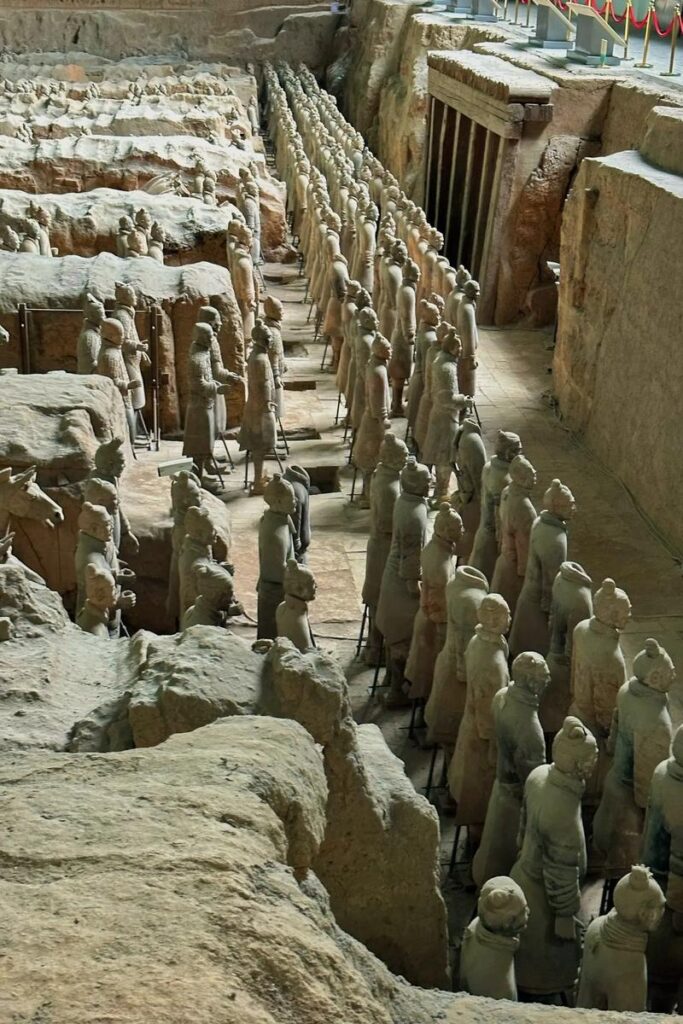
The Eternal Echoes Beneath the Loess
So, when someone asks, “Which country is famous for its terracotta warriors?” the answer is clear and resounding: China.
The Terracotta Army of Xi’an is one of the most awe-inspiring gifts ancient China has left the world. They have stood silently for over two thousand years, finally emerging into the modern world to silently narrate the story of an empire’s strength and ambition, an emperor’s eternal dream, and the wisdom and dedication of countless anonymous artisans. Standing at the edge of the pit, gazing at the thousands of terracotta warriors, time seems to lose its meaning. They transcend national borders, becoming a brilliant gem in humanity’s shared cultural heritage, continuously inspiring awe for ancient civilizations, curiosity about historical mysteries, and eternal admiration for art and creativity.
Beneath the ancient soil of Xi’an, China, lies not merely an army of terracotta warriors, but a grand epic about power, death, art, and immortality. It awaits your arrival to hear the profound echoes that have resonated across the centuries.


